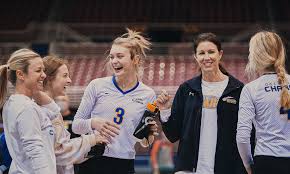In the world of professional sports, fans and media often focus on stats, highlights, and trophies. But beneath the surface of every victory or defeat lies a deeper, less visible contest the ongoing psychological battle that athletes fight within themselves. At the center of this internal struggle is a familiar but often misunderstood opponent: the inner critic.
Whether on the court, in the ring, or on the track, the inner critic whispers doubts, magnifies failure, and questions worth. Managing this voice has become one of the defining challenges of modern athletic performance. The most iconic athletes in history didn’t just master their sport they learned to master their minds.
The Inner Critic: A Constant Companion in Competition
Every athlete experiences the voice of the inner critic in some form. It might appear as pre-game nerves, over-analysis during a slump, or post-competition regret. While this internal dialogue can serve as motivation pushing athletes to train harder or avoid complacency it can also become paralyzing.
For many, the inner critic originates in the pressure to be perfect. Elite athletes are often their own harshest judges, expecting nothing less than excellence. When performance slips, even slightly, the self-talk turns negative:
“I’m not good enough.”
“I’m letting everyone down.”
“I don’t belong here.”
These thoughts aren’t limited to amateurs or rising stars. Tiger Woods, arguably the greatest golfer of all time, has openly spoken about his mental struggles. Despite dominating the sport for years, he faced periods where self-doubt and personal pressure nearly derailed his career. The same can be said of Ronda Rousey, who after her first UFC loss, admitted that the blow wasn’t just physical it was deeply psychological.
The Silent Struggle of Champions
Behind the polished interviews and highlight reels, some of the world’s most celebrated athletes have wrestled silently with their inner critic.
- Michael Jordan was famous for manufacturing slights and criticism to fuel his competitive fire. While this helped drive his greatness, it also reveals how much internal pressure he placed on himself to be the best — even inventing critics when real ones didn’t exist.
- Simone Biles, the most decorated gymnast in history, made headlines not just for her talent, but for stepping away from competition during the 2021 Tokyo Olympics to protect her mental health. Her decision, while controversial to some, highlighted the incredible toll that internal expectations and the pressure to perform can take even on the best in the world.
- Naomi Osaka, a four-time Grand Slam winner, brought further attention to this issue when she withdrew from major tournaments, citing the need to protect her mental well-being from the overwhelming inner and external criticism that accompanies elite sport.
These athletes have not only excelled at their sports they’ve helped change the conversation around mental health and the psychological weight of competition.
Mental Strength: The New Frontier of Athletic Excellence
Today, mental resilience is being recognized as a core part of an athlete’s toolkit. Just as strength coaches build bodies, sports psychologists build minds teaching athletes to face their inner critic without being consumed by it.
Common strategies include:
- Cognitive Reframing: Teaching athletes to recognize distorted thoughts and replace them with more constructive, realistic perspectives.
- Mindfulness and Meditation: Used by athletes like Kobe Bryant and LeBron James, mindfulness helps create space between negative thoughts and reactive behavior.
- Visualization: Athletes mentally rehearse success, training their brains to focus on the outcome they want, rather than the fears they harbor.
- Journaling and Thought Tracking: By writing down thoughts and fears, athletes can spot patterns in their thinking and learn to manage recurring self-critical cycles.
These practices not only improve performance but also protect athletes from emotional exhaustion and burnout both of which are often caused by an unchecked inner critic that never allows rest.
How the Greatest Icons Changed the Game
Athletes who overcome their inner critic don’t just succeed they inspire others to redefine success. In previous generations, vulnerability was seen as weakness. Today, it’s increasingly viewed as a marker of strength.
By publicly acknowledging their mental health struggles, athletes like Biles, Osaka, and even NFL quarterback Andrew Luck, who retired early due to the psychological toll of constant injury and pressure, have changed the game. They’ve redefined what it means to be a champion not just someone who performs under pressure, but someone who knows when to step back, seek help, and protect their well-being.
This cultural shift is significant. Young athletes now grow up in a world where talking about mental health is more accepted. Coaches and teams are more aware. And fans, slowly but surely, are beginning to understand that greatness doesn’t mean invincibility.
The Real Game Is Within
The psychological battle between athletes and their inner critic is perhaps the most defining, yet least visible, part of their journey. While trophies and medals are won in public, the foundation is laid in private in the quiet moments of self-doubt, in the choice to silence negative thoughts, and in the courage to face internal fears.
In mastering this mental game, the greatest sports icons have done more than just dominate their arenas. They’ve paved the way for a healthier, more honest understanding of what it truly means to be strong not just in body, but in mind.

